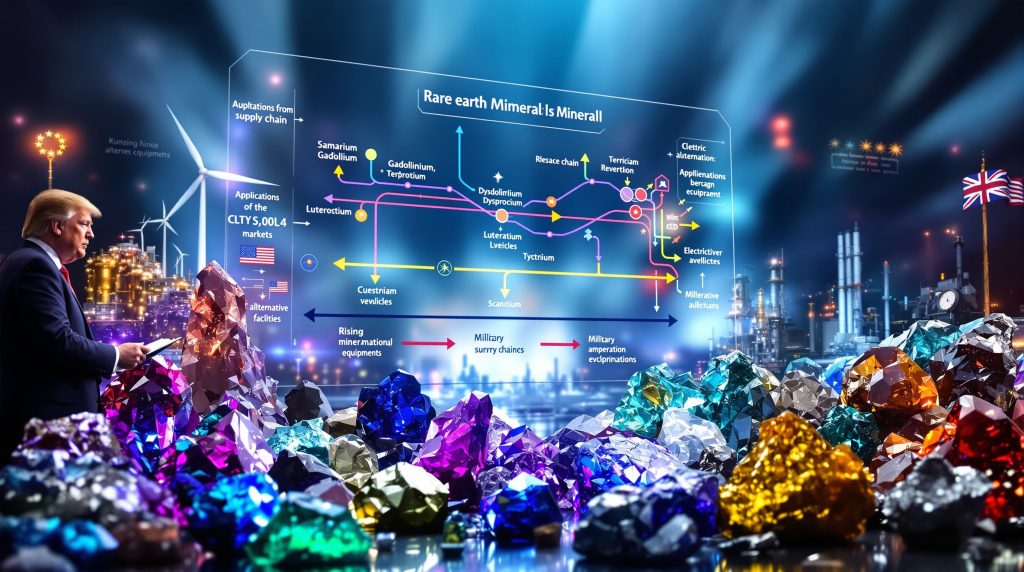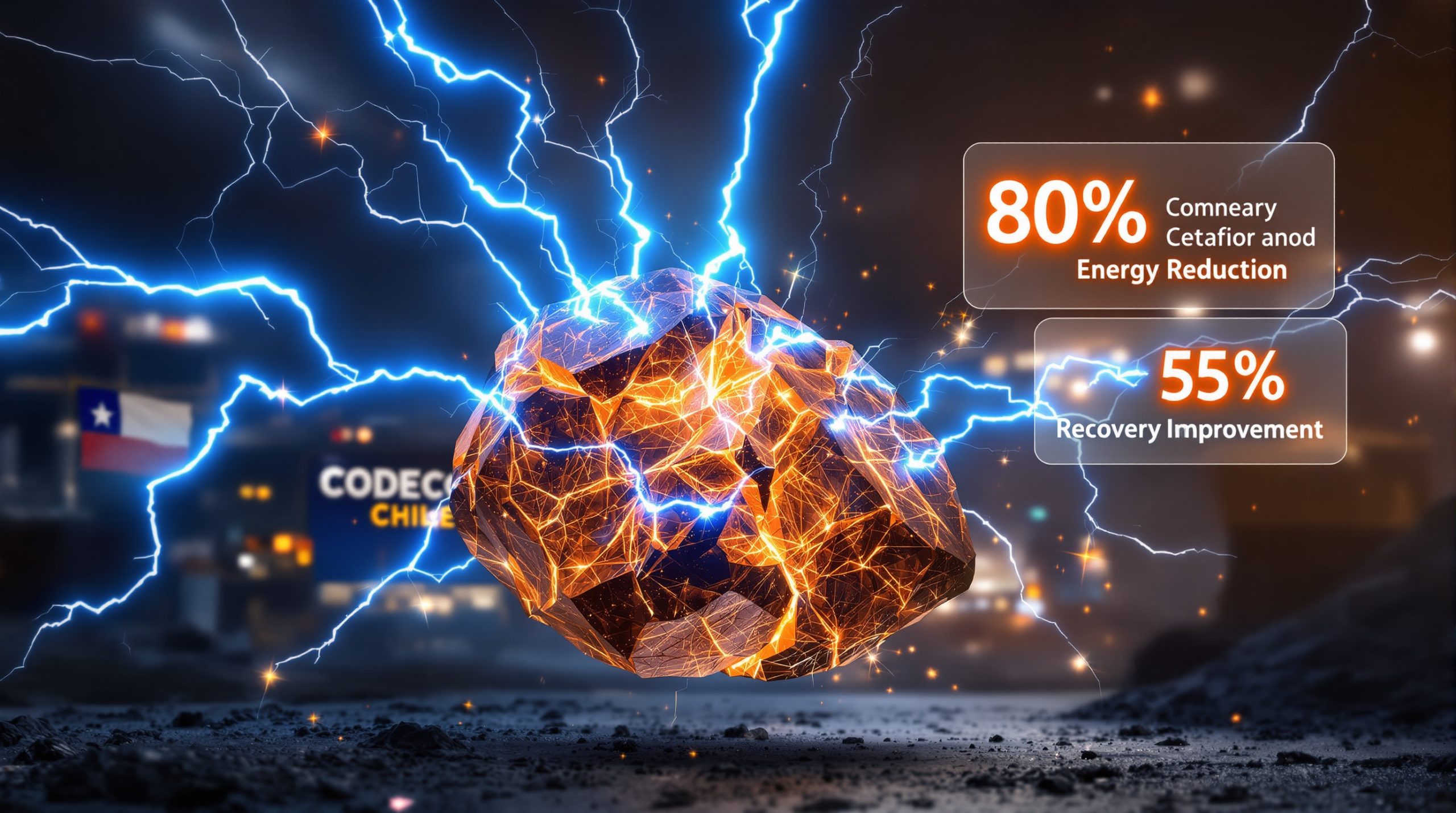China's Rare Earth Export Controls: Global Impact and Strategic Implications
China has implemented stringent export controls on critical minerals energy transition and related technologies, requiring export licenses for specific minerals essential to global technology supply chains. These restrictions represent a significant shift in global resource politics with far-reaching implications for industries worldwide and creating notable opportunities for Australian producers.
What Are China's New Rare Earth Export Controls?
China has implemented comprehensive export controls on rare earth elements and related technologies, affecting global supply chains across multiple critical industries. The controls require export licenses for seven strategically important minerals: samarium, gadolinium, terbium, dysprosium, lutetium, scandium, and yttrium. These regulations extend beyond raw materials to include rare earth magnets and processing technologies essential for defense systems, renewable energy, automotive manufacturing, and advanced semiconductor production.
China's dominance in the rare earth sector is substantial, controlling approximately 90% of global rare earth processing capacity according to the U.S. Geological Survey's 2024 Mineral Commodity Summaries, making these controls particularly impactful on global markets.
The Strategic Minerals Under Restriction
The controlled minerals serve crucial functions across multiple industries:
- Terbium and Dysprosium: Critical components in high-performance permanent magnets used in electric vehicles and wind turbines
- Samarium: Essential for aerospace applications and precision-guided weapons
- Gadolinium: Used in medical imaging equipment, nuclear reactors, and electronics
- Lutetium: Applied in petroleum refining catalysts and specialized medical equipment
- Scandium and Yttrium: Vital for aerospace alloys, laser technologies, and advanced ceramics
The International Energy Agency (IEA) has identified these rare earth elements as among the most critical minerals for clean energy technologies, with demand projected to increase 3-7 times by 2040 under their Sustainable Development Scenario.
License Requirements and Implementation Process
The new regulatory framework requires case-by-case approval for exports, with particular scrutiny applied to:
- Technologies with potential military applications
- Components used in advanced semiconductor manufacturing
- Materials destined for specific U.S. companies placed on a restricted list
China first announced export licensing requirements for rare earth-related technologies in December 2023, effective January 1, 2024, requiring exporters to apply for permits for rare earth smelting and separation technologies. The current export controls represent an expansion of this earlier framework.
Why Has China Imposed These Export Controls?
China's implementation of these controls represents a multifaceted strategic move with both economic and geopolitical dimensions.
Geopolitical Leverage and Trade War Dynamics
The timing of these restrictions correlates with escalating trade tensions between global powers. While specific tariff threats have fluctuated, China's export controls remain in place, demonstrating Beijing's willingness to use its resource dominance as leverage in international negotiations.
During the 2018-2019 US–China trade war impact, the US imposed tariffs on approximately $370 billion worth of Chinese goods, with China retaliating on $110 billion of US goods. The current export controls can be viewed as part of this continuing economic positioning.
Protecting China's Supply Chain Dominance
With its commanding position in global rare earth refining, China aims to:
- Maintain its strategic advantage in critical mineral processing
- Protect domestic industries that rely on these materials
- Incentivize foreign companies to relocate manufacturing to China to secure supply
China's 14th Five-Year Plan (2021-2025) explicitly prioritizes strengthening control over strategic mineral resources and supply chain security, indicating that these controls align with longer-term national strategies.
National Security Considerations
Beijing has explicitly cited national security concerns as justification for the controls, particularly regarding:
- Advanced defense applications using rare earth magnets
- AI and semiconductor technologies with dual-use potential
- Protection of proprietary processing technologies
This isn't China's first use of rare earth export restrictions. In 2010, China restricted rare earth exports during territorial disputes with Japan, causing prices to spike tenfold and creating significant market disruption.
How Will These Controls Affect Global Industries?
The ripple effects of China's export controls extend across multiple sectors and supply chains worldwide.
Impact on Defense and Aerospace
Military systems heavily dependent on rare earth components face potential disruptions:
- Precision-guided munitions requiring specialized magnets
- Radar and sonar systems utilizing rare earth elements
- Communication equipment and night vision technologies
- Advanced aircraft components and missile guidance systems
The U.S. Department of Defense uses rare earth elements in virtually all modern weapon systems. Each F-35 Lightning II fighter jet requires approximately 920 pounds of rare earth materials, underscoring the defense sector's vulnerability to supply disruptions.
Challenges for Clean Energy Transition
The renewable energy sector faces significant hurdles:
| Technology | Critical REEs | Potential Impact |
|---|---|---|
| Wind Turbines | Neodymium, Dysprosium, Terbium | Increased costs, production delays |
| Electric Vehicles | Dysprosium, Terbium | Battery and motor manufacturing constraints |
| Solar Panels | Various REEs | Efficiency component shortages |
| Energy Storage | Multiple REEs | Production bottlenecks |
A typical electric vehicle contains approximately 1 kilogram of rare earth permanent magnets in its electric motor, primarily using neodymium, praseodymium, dysprosium, and terbium. Similarly, a single large offshore wind turbine (3-5 MW) can require over 600 kilograms of rare earth permanent magnets.
Semiconductor and Electronics Manufacturing Disruptions
The controls particularly target advanced chip manufacturing:
- High-performance computing components
- Memory technologies
- Specialized electronics for telecommunications
- Precision manufacturing equipment
Rare earth elements like cerium, lanthanum, and yttrium are used in chemical mechanical polishing (CMP) processes essential for advanced chip fabrication at nodes below 10nm, making them crucial for cutting-edge semiconductor production.
What Does This Mean for Global Rare Earth Supply Chains?
China's export controls are accelerating fundamental shifts in global rare earth supply chains.
Price Volatility and Market Uncertainty
The immediate market response includes:
- Sharp price increases for restricted elements
- Supply uncertainty driving inventory stockpiling
- Contract renegotiations across affected industries
- Market speculation on alternative sources
During the 2010 China-Japan rare earth export restrictions, neodymium prices increased from approximately $50/kg to over $500/kg within months, demonstrating the potential for dramatic market volatility.
Accelerated Development of Alternative Supplies
Countries and companies are fast-tracking efforts to reduce dependence on Chinese rare earths:
- Expedited mining projects in Australia, Canada, and the United States
- Increased investment in recycling technologies
- Research into substitute materials and technologies
- Strategic mineral stockpiling by governments
According to the USGS, developing a new rare earth mine from discovery to production typically requires 7-15 years, including exploration, permitting, construction, and commissioning. This timeline highlights the challenges of rapidly developing alternative supplies.
The global distribution of rare earth reserves extends beyond China, with significant deposits in Vietnam (22 million metric tons), Brazil (21 million MT), Russia (21 million MT), India (6.9 million MT), Australia (4.2 million MT), and the United States (2.3 million MT).
How Are Australian Producers Positioned to Benefit?
Australian rare earth producers stand at a pivotal moment that could transform the sector.
"Once-in-a-Generation" Opportunity for Australian Miners
The export controls create substantial advantages for Australian producers:
- Premium pricing for non-Chinese rare earth supplies
- Accelerated offtake agreements with manufacturers seeking supply security
- Increased investment interest in Australian mining projects
- Expedited permitting and development support from government
Australia holds the world's sixth-largest rare earth reserves at approximately 4.2 million metric tons REO, positioning it as a significant potential alternative supplier. The development of Australia's critical minerals reserve further strengthens this position.
Key Australian Players in the Rare Earth Space
Several ASX-listed companies are positioned to capitalize on this shift:
-
Lynas Rare Earths (ASX: LYC): The largest producer outside China with established processing capabilities. Lynas produced 11,773 tonnes of rare earth oxide (REO) in FY2024, representing the largest rare earth production outside of China.
-
Iluka Resources (ASX: ILU): Developing integrated rare earths processing through the Eneabba Rare Earths Refinery in Western Australia, with a Final Investment Decision made in 2023 and first production targeted for 2025-2026.
-
Australian Strategic Materials (ASX: ASM): Advancing the Dubbo Project with downstream processing plans.
-
Northern Minerals (ASX: NTU): Focused on heavy rare earths production at Browns Range.
-
Arafura Resources (ASX: ARU): Developing the Nolans Project with integrated processing.
What Are the Long-Term Strategic Implications?
The export controls signal deeper shifts in global resource politics and industrial strategy.
Reshaping of Global Manufacturing and Supply Chains
Industries are responding with structural changes:
- Regionalization of supply chains to reduce vulnerability
- Vertical integration to secure access to critical materials
- Increased government intervention in critical minerals sectors
- New strategic partnerships between producers and manufacturers
The Minerals Security Partnership (MSP), launched in June 2022, includes 14 partner countries (Australia, Canada, Estonia, Finland, France, Germany, India, Italy, Japan, Norway, South Korea, Sweden, United Kingdom, and United States) working to strengthen critical mineral supply chains.
Accelerated Technology Development
The restrictions are driving innovation in several areas:
- Alternative materials research to reduce rare earth dependence
- Advanced recycling technologies to recover and reuse rare earths
- More efficient use of rare earths in component design
- Substitution strategies for critical applications
Current rare earth element recycling rates globally are less than 1%, despite theoretical recycling potential of 25-30% of annual demand from end-of-life products. This gap represents a significant opportunity for technological innovation.
Geopolitical Realignment Around Critical Resources
New alliances are forming based on resource security:
- Strengthened partnerships between Australia, US, Japan, and EU on critical minerals
- Increased cooperation on processing technology development
- Joint investment in mining and refining projects
- Coordinated policy responses to resource nationalism
In 2022, the U.S. invoked the Defense Production Act to accelerate domestic critical minerals production, with $35 million allocated to MP Materials for heavy rare earth separation, demonstrating the increasing national security focus on rare earth supply chains. More recently, the critical minerals executive order has further emphasized this priority.
How Should Investors Approach This Changing Landscape?
The rare earth sector presents both significant opportunities and risks for investors.
Identifying Companies with Genuine Advantage
Not all rare earth projects will succeed despite favorable market conditions. Key factors to assess include:
- Processing capability and technology access
- Project advancement stage and timeline to production
- Specific rare earth distribution (heavy vs. light rare earths)
- Offtake agreements and strategic partnerships
- Regulatory and environmental considerations
Companies with access to rare earth separation and processing technology hold significantly more value than those with mining-only operations, as processing represents approximately 70-80% of the value chain.
Timeline Considerations for Investment Returns
Investors should understand the development horizons:
- Existing producers will see immediate benefit from price increases
- Near-term developers (12-24 months to production) are positioned for medium-term gains
- Early-stage projects face longer paths to commercialization despite favorable conditions
- Processing technology companies may see faster returns than mining projects
Historical data shows that fewer than 10% of rare earth exploration projects globally advance to commercial production due to technical, environmental, and economic challenges.
Heavy rare earth elements (dysprosium, terbium, ytterbium, lutetium) typically trade at 5-50 times higher prices than light rare earths (cerium, lanthanum) due to scarcity and critical applications, making the specific rare earth distribution of a deposit crucial to its economic viability.
What Could Change This Outlook?
Several factors could alter the trajectory of this situation.
Potential Policy Reversals or Modifications
The export control landscape remains dynamic:
- China could adjust restrictions as part of broader trade negotiations
- Implementation might prove more flexible than initially announced
- Targeted exemptions might be granted for specific industries or companies
- International pressure could lead to policy modifications
China adjusted rare earth export quotas multiple times between 2010-2015, eventually eliminating the quota system in 2015 following WTO rulings. This historical precedent suggests that current controls might also evolve over time.
Technological Disruptions
Research breakthroughs could change market fundamentals:
- New extraction or processing technologies
- Material substitution innovations
- Recycling advancements
- Alternative design approaches that reduce rare earth requirements
Research into rare earth-free permanent magnets using iron-nitrogen compounds and manganese-based alternatives is progressing but remains 5-10 years from commercial viability for high-performance applications.
Frequently Asked Questions About China's Rare Earth Export Controls
Which Industries Are Most Vulnerable to These Restrictions?
The sectors facing the greatest impact include:
- Defense electronics and systems manufacturers
- Wind turbine producers
- Electric vehicle manufacturers
- Advanced semiconductor fabrication
- Medical imaging equipment makers
- Telecommunications hardware companies
How Long Will It Take to Develop Alternative Supply Chains?
Timeframes vary by element and application:
- Processing facilities typically require 3-5 years to develop
- New mining operations can take 5-10 years from discovery to production
- Recycling infrastructure development requires 2-4 years
- Material substitution research may take 5+ years to commercialize
Rare earth processing requires specialized chemical separation facilities due to the similar chemical properties of lanthanide elements, with capital costs for a medium-scale processing facility estimated at $500 million to $1+ billion.
Are These Export Controls Likely to Escalate Further?
Several indicators suggest potential expansion:
- China's previous pattern of gradually extending controls
- Additional rare earths not yet restricted could be added
- Processing equipment and technology transfers might face new limitations
- Downstream products containing rare earths could be included in future restrictions
Conclusion: A Transformative Moment for Global Critical Minerals
China's rare earth export controls represent more than a tactical trade move—they signal a fundamental shift in how critical minerals will be managed, processed, and traded globally. For Australian producers, this creates both immediate opportunities and long-term strategic positioning advantages as the world reconfigures supply chains for greater security and resilience.
The resulting market disruptions will likely accelerate investment in non-Chinese rare earth sources, processing technologies, and alternative materials research. Companies and countries that can rapidly adapt to this new reality will find themselves with significant competitive advantages in industries ranging from renewable energy to defense and advanced manufacturing.
The Australian Government's Critical Minerals Strategy 2023-2030 identifies rare earths as among the highest priority minerals, stating that "Australia has a significant opportunity to become a major supplier of processed critical minerals to the world." With proper investment and strategic development, Australian producers are well-positioned to capitalize on this transformative moment in global critical minerals markets.
According to recent European critical raw materials initiatives, international cooperation will be essential in addressing these supply chain challenges, with multiple regions developing coordinated responses to China's tightened rare earth export controls.
Ready to Identify the Next Major Mineral Discovery?
Don't miss potential investment opportunities in the rare earths sector as China's export controls reshape global markets. Discover significant ASX mineral discoveries as they happen with real-time alerts from Discovery Alert's proprietary Discovery IQ model at https://discoveryalert.com.au/discoveries/.




